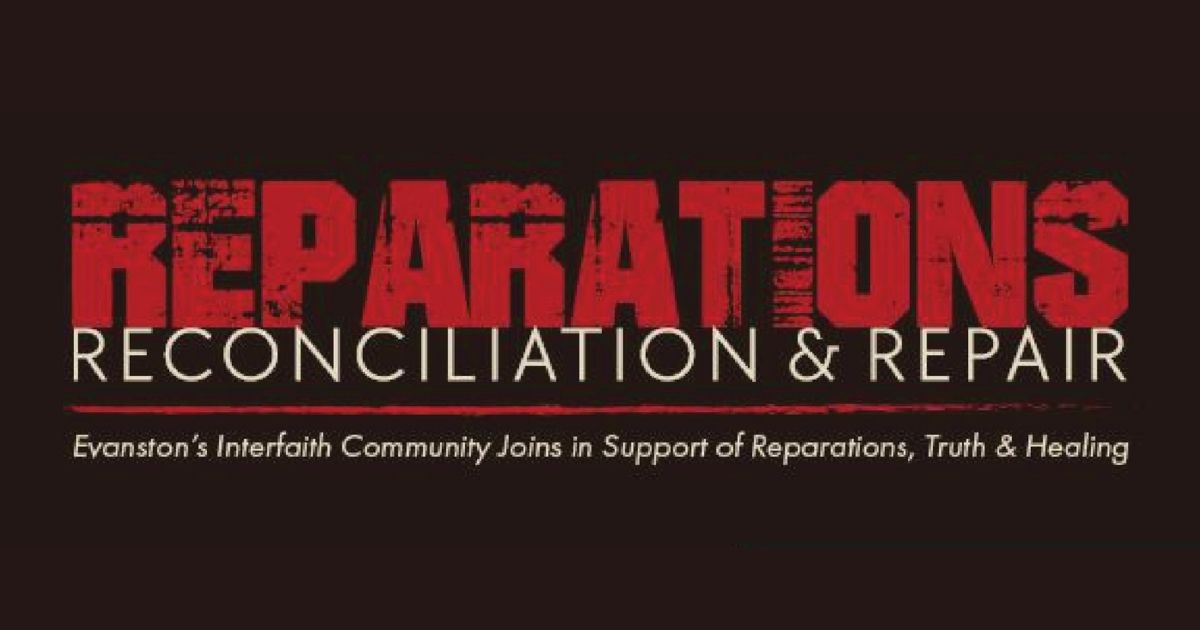
A class action lawsuit has been filed to stop the city of Evanston from paying $25,000 in reparations to its Black residents.
The lawsuit, filed May 23 in the U.S. District Court of Northern Illinois in Chicago, names six non-Black plaintiffs.
Evanston made history in 2021 as the first U.S. city to award reparations to Black residents.
Led by Alderman Robin Rue Simmons, by a vote of 8 to 1, Evanston passed an ordinance that created a $20 million program that requires Evanston to pay $25,000 each to its Black residents whose ancestors were victims of housing discrimination during segregation on the North Shore. The city committed to paying out $10 million in reparations over the next decade.
The $25,000 payment can be used as a down payment on a house or for home repairs.
So far, the city has paid $5 million to 193 of the town’s Black residents over the past two years, according to the Washington Post. According to Evanston’s website, the city expects to make payments to 80 additional direct descendants of Black residents who lived in the city between 1919 and 1969.
But Judicial Watch, a Washington, D.C. organization said the reparations discriminate against Evanston’s non-Black residents. The lawsuit also says the program’s “race-based eligibility requirement” violates the Equal Protection Clause of the 14th Amendment.
The plaintiffs being represented by lawyers for Judicial Watch are Margot Flinn, Carol Johnson, Stasys Neimanas, Barbara Regard, Henry Regard, and Stephen Weiland.
According to the lawsuit, Evanston’s program is biased against the city’s non-Black residents and should only apply to people who can prove they experienced discrimination in the city. About 60 percent of Evanston’s residents are white, and 17 percent are Black. Hispanic and Asian residents each make up just less than 10 percent of the population.
“Remedying discrimination from 55 to 105 years ago or remedying discrimination experienced at any time by an individual’s parents, grandparents, or great grandparents has not been recognized as a compelling governmental interest,” according to the complaint.
Judicial Watch President Tom Fitton said “The Evanston, Illinois ‘reparations’ program is nothing more than a ploy to redistribute tax dollars to individuals based on race. This scheme unconstitutionally discriminates against anyone who does not identify as Black or African American. This class action, civil rights lawsuit will be a historic defense of our colorblind Constitution.”
According to the lawsuit, “Defendant also has not and cannot demonstrate that its use of a race as an eligibility requirement is narrowly tailored. Among other shortcomings, Defendant’s use of race as a proxy for experiencing discrimination between 1919 and 1969 does not limit eligibility to persons who actually experienced discrimination during that time period and therefore is overinclusive. Defendant also failed to consider race-neutral alternatives, such as requiring prospective recipients show that they or their parents, grandparents, or great grandparents actually experienced housing discrimination during the relevant time period.”
In addition to using race as an eligibility requirement for reparations, the plaintiffs in the lawsuit ask the court to require Evanston to award payments to all city residents regardless of race.
Evanston city officials are not commenting on the lawsuit. But Evanston’s racist past has been well documented in books and newspapers, including the Chicago Defender.
A Crusader review of Judicial Watch’s website revealed the organization has a history of challenging policies aimed at helping Blacks who have suffered from systemic discrimination in institutions. Recently, the organization criticized the conviction of former President Donald Trump, who was found guilty of 34 counts of fabricating business records to cover up a $130,000 payment to porn star Stormy Daniels in 2016.
Blacks began arriving in Evanston in the 1850s, and by 1880 there were approximately 125, according to several historical documents. With the Great Migration in full swing, the Black population in Evanston grew to 6,026 in 1940.
Many Black residents in Evanston were forced to live on the city’s West Side in a triangle shaped neighborhood located west of Green Bay Road. Today, most of the area makes up the city’s 5th Ward.
During segregation, the area was the least desirable place in Evanston and as more Blacks sought better housing in Evanston, white real estate brokers developed a practice of informal racial zoning.
According to one article, “Developing a Segregated Town,” Evanston’s banks generally refused to make mortgage loans to Black families seeking to buy homes on blocks that were not viewed as “acceptable” for Black people. Black residents who owned vacant lots near the lake were denied loans to build on their properties and were eventually forced to sell them.
In 1917, the NAACP opened a branch in Evanston.
In 1921, Evanston passed a zoning ordinance that zoned for commercial use almost every block where Blacks lived outside of the west side of town. As these areas were converted to commercial use, Black families were dislocated to the west. In the 1930s Blacks in Evanston became victims of redlining because of federal discriminatory lending policies.
Evanston’s public beaches and parks did not allow Blacks. The city’s first Black alderman, pioneer Edwin B. Jourdain Jr., a Harvard graduate, fought to desegregate them.
The Evanston YMCA barred Blacks in 1914 before the city’s Black community came together to form the Emerson Street YMCA. Boy Scout troops barred Black youth in 1914, and Black residents formed their own troop in Evanston.
During segregation, Evanston’s prestigious Northwestern University did not allow Black students to live in any campus dormitories. Black students lived in the homes of local Black residents or at the Emerson Street YMCA. Students continued to room at the Emerson Branch until Northwestern fully desegregated its campus dormitories in the 1960s.
The two local hospitals began to turn away Black residents after 1900, with some exceptions, and the Evanston Sanitarium was established in 1914 to serve Black residents.
Many restaurants, hotels and stores in Evanston did not serve Black people. All but one city park forbade Black children from using the playground equipment. Evanston movie theatres required Black patrons to sit in the balcony.



